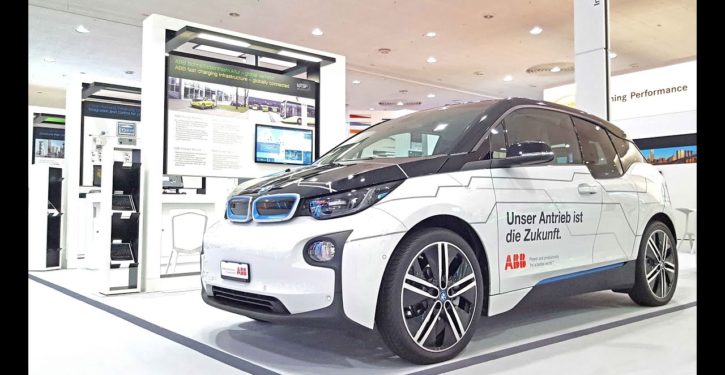
Reason magazine reports that the Biden administration will spend “$7.5 billion on chargers that electric car owners likely won’t use.”
As part of its recently passed infrastructure bill, the Biden administration plans to spend $7.5 billion building 500,000 chargers for electric vehicles. But will drivers actually want to use those chargers?
The two biggest impediments to the widespread adoption of electric vehicles are the vehicles’ range and their upfront cost. Right now there are only five varieties of electric vehicles with a range of more than 350 miles per charge, and none of them retail for a base price of less than $47,000….Conveniently placed vehicle chargers could mitigate the range issue: Ideally, a trip to a charger would simply replace a trip to the fuel pump. But the Biden plan is unlikely to fix this problem….[the chargers the Biden plan is expected to fund] produce around 25 miles of range per hour, meaning that a full charge from empty could take five hours or longer…..if the long-term goal is to get more people to make the switch, then those cars have to function like the gas-powered cars people have now. Spending billions on chargers that take an entire afternoon to charge a vehicle is not the way to do that.
This spending is part of the recently-enacted $1.2 trillion infrastructure package. That package will increase the national debt, while wasting money on inefficient forms of transportation, and slowing down traffic on some roads.
“About half of the transportation dollars in the bill are dedicated to Amtrak and urban transit, modes of transportation that carry less than 1 percent of passenger travel and no freight. While the other half appears to be dedicated to highways, much of that will be spent on projects that will reduce, not maintain or increase, roadway capacities,” lamented transportation expert Randal O’Toole.
That includes money “to calm traffic and reduce vehicle speeds” or otherwise “slow or stop a motor vehicle.”
The infrastructure package contains “poison pills.” As an economist notes, one “poison pill” in the bill
is the so-called highway safety improvement program. It would be more accurately titled the highway-congestion-increasing program as it provides billions of dollars in funding for projects aimed at slowing traffic and increasing congestion. This includes money for “medians, pedestrian crossing islands, protected bike lanes, and protected intersection features” and other projects “to calm traffic and reduce vehicle speeds” or otherwise “slow or stop a motor vehicle.” It is obviously ironic that one federal program seeks to reduce congestion while another seeks to increase it.
Another potential “poison pill” is the infrastructure bill’s “reconnecting communities” program. It will allow the use of federal funds for “removing, retrofitting, or mitigating” any road “that creates a barrier to community connectivity.”
But “community connectivity” can mean more intersections, more stops, and thus slower speeds for motorists passing through a community. That standard “sets a dangerous precedent that puts some vague definition of ‘community’ above the clear benefits of mobility.”
Reason Magazine earlier reported that the national debt and the cost of transportation projects will rise as a result of the infrastructure package:
The CBO projects that the bill will add about $256 billion to the federal budget deficit over 10 years. Actually, that number is likely to be closer to $400 billion because the infrastructure package includes a number of dubious offsets….The bill is also larded up with provisions that will make infrastructure projects more costly for taxpayers….Like the Davis-Bacon Act, which requires that most workers on federally subsidized building projects are paid the local “prevailing wage” negotiated by unions, even if the workers themselves are not unionized—and only about 13 percent of construction workers are part of a union.
The Davis-Bacon Act rules can increase the costs of infrastructure projects by as much as 20 percent…NEPA reviews take more than four years on average, and they are frequently used as tools to block development for reasons that often have little to do with the environment….“Biden’s … NEPA changes … ensure that more federal money will be spent on red tape.”
While inflating the cost of actual infrastructure projects, the bill also promises to waste federal tax dollars on boondoggles like …unnecessary fiber-optic lines…Other provisions in the proposal virtually guarantee that those subsidies flow to publicly owned networks rather than private ones. This seems to fulfill an ideological goal—making internet access more like a public utility rather than a private service is what many advocates of broadband spending seek—rather than a practical one.
In addition to the $1.2 trillion infrastructure package proposed by Congress, Biden had also proposed a larger $2.5 trillion infrastructure plan. That plan would subsidize obsolete technologies, and reduce private investment in infrastructure and other fixed assets by $1 trillion. It would also harm private infrastructure such as power stations, freight railways, and pipelines. And since it relies on accounting gimmicks, Biden’s infrastructure plan would also increase the national debt.



